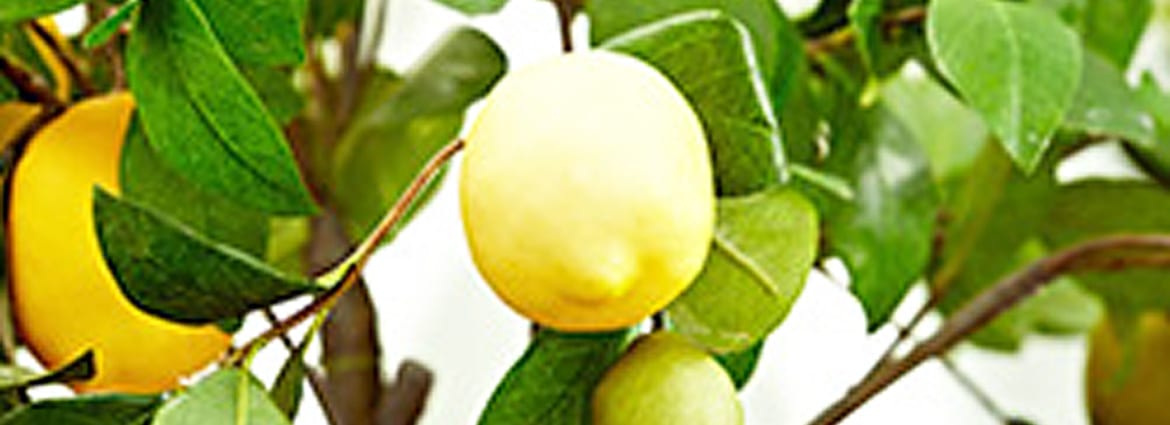
- Feb 10, 2015
- Dreamworks Tree Services
- Tree Care Tips, Tree Planting
- 0 Comments
Proper Tree Care And Growing Conditions Allow Lemon Trees To Thrive Indoors
Should the topic of conversation turn to tree care, it would not be surprising if thoughts immediately arose about how and when to prune or trim trees planted on a residential or commercial property. Depending on the species of tree and the time of year, property owners may also associate their trees with such traits as general aesthetics, shade, cool breezes, fruit, wind breaks, or a decorative look for the exterior their home or business.
However, while largely overlooked, there are trees that can grow and flourish in indoor environments – with the proper care, of course. One such species is citrus trees, and in particular, lemon trees.
With proper growing conditions, lemon trees can add an aura to indoor spaces such as:
- Apartment units
- Condominium units
- Atria/entranceways
- Waiting rooms
- Sunrooms/sitting rooms
Only a few materials are required to plant lemon trees indoors. These include:
- Planter pot (with drainage holes)
- Drainage saucer or humidity tray
- Pebbles (for the saucer or tray)
- Potting soil – slightly acidic, peat moss-based
- Small piece of landscaping cloth or burlap
- Mulch (optional)
With these items in hand, the home or office gardener can proceed to plant as follows:
- Place pebbles in the saucer or humidity tray
- Partially fill saucer or tray with water
- Place planter on the layer of pebbles
- Line bottom of planter with cloth or burlap
- Fill planter about half-way with potting soil
- Set lemon tree on top of potting soil layer
- Fill planter with more soil
- Cover all roots; do not cover the trunk
- Press down on soil around base of the tree
- Water thoroughly (then add layer of mulch)
At this stage, the amount of care administered in the planting of lemon trees becomes superseded by the amount of care required on a daily basis to maintain their health and vitality.
First and foremost, lemon trees grow best indoors with a minimum of eight hours and preferably twelve hours of sunlight per day in a full southern exposure – if this is neither possible nor feasible within the chosen indoor setting, the amount of available light can be supplemented with 40-watt fluorescent lighting.
Additional aspects that contribute to the proper care of an indoor lemon tree include:
- Temperature of 700F daytime and no lower than 550F at night
- Moisture – keep soil evenly moist; spray mist leaves daily
- Nutrition – apply a well-balanced fertilizer or use compost
- Pollination – must be done manually (soft brush or cotton swab)
- Air flow – open windows whenever possible in warmer weather
- Humidity – best provided by evaporation from the saucer or tray
With the proper tree care and growing conditions, lemon trees can thrive in an indoor setting, providing their caretakers with aesthetic appeal, fragrant blossoms, fruit crops, and perhaps even a conversation piece with family and friends.
Contact A Professional Arborist For Tree Care Tips On Indoor Lemon Trees
While growing an indoor lemon tree can provide a sense of pride and accomplishment, it can also provide some challenges in terms of its care, particularly for home gardeners lacking prior experience with these types of trees.
For those wishing to accept this challenge, or in situations where the growth of current indoor lemon trees is less than optimal, it may be helpful to consult the expertise of a tree care service, such as a qualified arborist from DreamWorks Tree Services.
Our professional arborists can offer valuable insight and suggestions relating to initiating or improving lemon tree growth and care. This support can include guidance and/or feedback with respect to any or all aspects of:
- Lighting
- Humidity
- Temperature
- Nutrition/soil care
- Pollinating
- And more
If you would like professional advice on growing lemon trees indoors or on improving the health and vitality of your lemon trees, call our tree care experts today at either 647-924-2627 or 1-800-407-9917 or contact us to speak with a qualified arborist.












